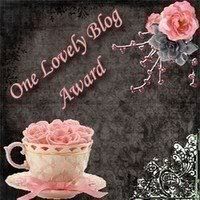David welcome to my blog and thanks so much for sharing your thoughts on art with us. You can read more of his thoughts at his website here: http://whatslefttodream.wordpress.com/
What does it mean? That’s a question that’s asked entirely too often of art in my opinion. It always comes with a student’s sort of desire to hear the answer, little mental notebook open, pen at the ready to jot it down for future reference. It’s a question that assumes the answer is a key to unlocking some great secret within the text or image or musical notes. It’s art turned academic; a search for the correct answer amid all the incorrect possibilities. It’s a question that gives the importance of art in our world to the artist, and takes it away from the audience. We are all just hapless observers, victims to the true genius of the artist when ‘What does it mean?’ is the question we ask.
In art there should be no correct answer, no universal truth. Art is not the real world come to bear on our lives, where we must face it with a steadfast need for truth. Art, to me, is an avenue to another way of facing the hardest moments in life or a reminder of the best things given prettier words. Art doesn’t effect me because of what I think the artist intended with it. It effects me because of what it means to me, to my life, my experiences, my hopes and dreams or my greatest despair.
The question, then, should not be ‘What does it mean?’ but rather, ‘What does it mean to me?” The importance of art has only a little to do with the artist’s intent, and is instead focused on how the audience, you and I, perceive it. Does the work of the lone artist, whose work will only be seen by herself, no matter the depth of its theme, mean anything to anyone but her? It doesn’t. It could be the single greatest work of all time, and it would only be important to her, because she alone is the audience. Once that work is made available to the public, its importance shifts from her to us, because we are the ones that will disseminate it, we are the ones who may be inspired by it, or turn away from it without a care.
Consider as an example Dylan Thomas’ “And Death Shall Have No Dominion”. Is it a celebration of life, or the strength of human beings in hard times? Or does it herald the glory of an afterlife? One of those possibilities appeals to me on emotional level, allows me to feel a connection to the words that gives them importance to me when I read them or hear them. Another, the one more commonly accepted as Thomas’ vision, means absolutely nothing to me, and makes the words feel pointless. I don’t read poetry as a riddle to be solved, and somehow more appreciated when the answer is found. Like all of my interests in art, I read poetry to evoke some kind of emotion in myself.
And that should be the number one goal of any artist: to create something that evokes emotion; something that thrills them or makes them laugh, something that instills in them a belief that someone understands, even if the connection they make is not what you intended, to reduce them to tears not because your work is so utterly profound, but because they feel some sense of familiarity with the sentiment they’ve found in it, their own personal truth.
To be inspired by art is not to be inspired by an artist, but rather by your own feelings brought out by the words, the image, the musical notes that swell in your chest long after they’ve faded from your ear. The music of the 60s didn’t change the world, it catered to an audience that already had the will to change.
Art means more than the artist. I say this because I live it. I create because I wouldn’t know what else to do with myself if I didn’t. I am an artist because art enriches me, not the other way around. I write a poem not to communicate my desires to the world, but in the hope that someone else will find theirs. I take a photograph not to make the world see what I see, but to invite them to see themselves through their interpretation.
Art is an avenue through which we can find ourselves. The artist is not the roadmap, nor the street signs to guide us, but the laborer that laid the stone.
~~~
 A new favorite for me. I love Bigalow’s Gingersnapish and Eggnog tea, but I don’t see them very often. Of course I love the seasonal teas best. When I saw this one, I knew I had to have a box. Especially since it was on sale due to being out of season. I ended up buying five so hopefully that will last me for a while. I love pumpkin teas and this one is no exception. It’s not quite as good as the pumpkin chai from twinnings, but the blend of pumpkin spices make it taste like I’m drinking a version of pumpkin pie 🙂 It does have black tea in it, for that extra kick I need to get going sometimes. Highly recommended.
A new favorite for me. I love Bigalow’s Gingersnapish and Eggnog tea, but I don’t see them very often. Of course I love the seasonal teas best. When I saw this one, I knew I had to have a box. Especially since it was on sale due to being out of season. I ended up buying five so hopefully that will last me for a while. I love pumpkin teas and this one is no exception. It’s not quite as good as the pumpkin chai from twinnings, but the blend of pumpkin spices make it taste like I’m drinking a version of pumpkin pie 🙂 It does have black tea in it, for that extra kick I need to get going sometimes. Highly recommended.









Wonderful post!
Artists are like shamans who use their special gifts to heal the tribe. Art is a sacred calling.
This is a really great post – I enjoyed reading it a lot. I’ve known a lot of artists over the years and they all share this quality that I find very inspirational!
A really good post and a point I tried to make to my highschool english teacher who always told me that my interpretation of a poem was wrong. Oh well, I knew the difference. Thanks for the inspiration.
“To be inspired by art is not to be inspired by an artist, but rather by your own feelings ”
David you took the words from my mind. I write poetry on occasion and have always felt it’s art for that very reason. Really great post and I’m so glad you stopped by.
Julie, awesome as always. 🙂
Thank you all for stopping by!!!
Julie
“Art is an avenue through which we can find ourselves. The artist is not the roadmap, nor the street signs to guide us, but the laborer that laid the stone.”
Beautiful.
Thank you so much for the wonderful post JA!
Lisa
I never understood the need for external interpretation of art for this very reason. If it doesn’t mean something to the observer/reader, then no explanation from someone else will make that connection happen.
Beautiful post 🙂
Like all forms of art, it’s subjective. I especially liked the comment ‘what it means to me.’ Well said.